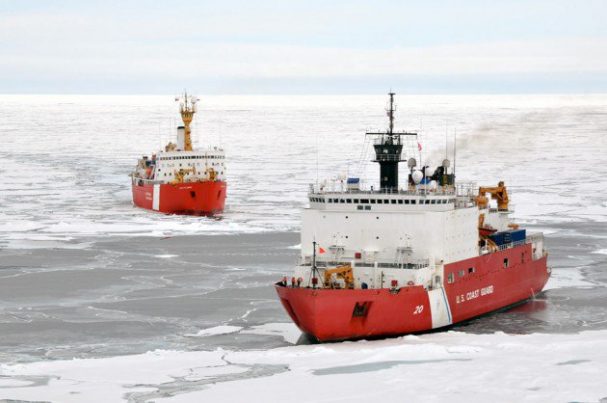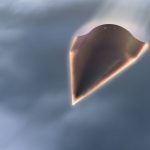
COLDER war: U.S. builds up Arctic presence to ward off encroaching Chinese, Russian forces
Tuesday, September 22, 2015 by usafeaturesmedia
http://www.nationalsecurity.news/2015-09-22-colder-war-u-s-builds-up-arctic-presence-to-ward-off-encroaching-chinese-russian-forces

(NationalSecurity.news) The U.S. military is expanding its presence – and firepower – in one of the coldest regions on earth, the Arctic, as a counterweight to increasing presence of Russian and Chinese forces, the Los Angeles Times reported.
The primary purpose for the expanding footprints of the Russian and Chinese militaries is the long-time presence of, and growing accessibility to, natural resources. But the added presence is forcing American intelligence agencies to pour more resources into studying potential emerging threat in the Arctic for the first time since the Cold War, marking a rise in the region’s strategic importance.
The Times reports that, over the past 14 months, many of the U.S. intelligence community’s 16 agencies have tasked analysts to work full-time on the Arctic – its expanse, ecosystems, and especially its strategic importance and value. Recently, the Office of the Director of National Intelligence, led by DNI James Clapper, convened a “strategy board” that brought together the analysts so they could share and discuss findings.
Besides relying on U.S. spy satellites overhead and U.S. Navy sensors buried deep in frigid waters, analysts process raw intelligence from a recently overhauled Canadian listening post located near the North Pole, as well as a Norwegian surveillance ship called the Marjata, now undergoing an upgrade at the Navy’s shipyard in southern Virginia.
The Obama administration’s renewed strategic interest in the Arctic was highlighted recently after the Pentagon confirmed it was tracking five Chinese warships in the Bering Sea between Alaska and Russia – the first time that has happened. Defense officials said the Chinese ships were in international waters steaming towards the Aleutian Islands but otherwise posed no threat.
The Times reported that the growing U.S. focus on the region is mirrored by other nation states with polar interests, setting off a scramble for mostly untapped mineral reserves and deposits of oil and natural gas as ice caps thin and recede. Besides the U.S., Russia and China, other Western powers included Canada, Denmark and Norway are also pursuing interests.
In the U.S., the National Geospatial-Intelligence Agency (NGA) has spent the past two years devising new maps and charts of water passages and territories in the vast Arctic. NGA Director Robert Cardillo, in a statement, said that the agency intends to “broaden and accelerate” that mapping work, while other intelligence agencies work to chart the Bering, Chukchi and Beaufort Seas.
“There are a lot of things we can see now that we couldn’t see 10 years ago,” said a U.S. intelligence official, who spoke to the Times on condition of anonymity to discuss the new interest in the Arctic.
Russia’s interests in the region are especially clear – and ominous. The Putin administration announced in 2014 it would reopen 10 former Soviet-era military bases along the Arctic seaboard – including 14 airfields that were shuttered at the end of the Cold War. Also, a shipyard in northern Russia is building four new nuclear-powered submarines.
Alaska Gov. Bill Walker complained recently during President Obama’s trip to the state that the Defense Department was closing U.S. military bases and shedding forces as Moscow is beginning to rebuild its military infrastructure following its decimation after the collapse of the Soviet Union.
“It’s the biggest buildup of the Russian military since the Cold War,” Walker told reporters during Obama’s visit to his state. “They’re reopening 10 bases and building four more, and they’re all in the Arctic, so here we are in the middle of the pond, feeling a little bit uncomfortable with the military drawdown.”
During his trip, Obama called for more U.S. Coast Guard icebreaker ships that could pave the way for U.S. warships and commercial vessels. As The New York Times reported:
The aging Coast Guard fleet is not keeping pace with the challenge, the administration acknowledged, noting that the service has the equivalent of just two “fully functional” heavy icebreakers at its disposal, down from seven during World War II. Russia has 41 of the vessels, with plans for 11 more. China unveiled a refurbished icebreaker in 2012 and is building another.
Canada and Norway, especially, are assisting in the U.S. effort to reestablish Cold War-era facilities and ships that will be needed to both enforce claims on portions of the Arctic seabed and to monitor Russian and Chinese activities.
In a recent meeting with Icelandic officials, Deputy Secretary of Defense Bob Work reaffirmed U.S. defense commitments to the nation and talked about the increasing strategic importance of the Arctic.
In a visit to Keflavik Air Base, Work expressed appreciation for Iceland’s leadership role in enhancing regional cooperation on Arctic issues, including maritime search and rescue activities.
See also:
Tagged Under:






